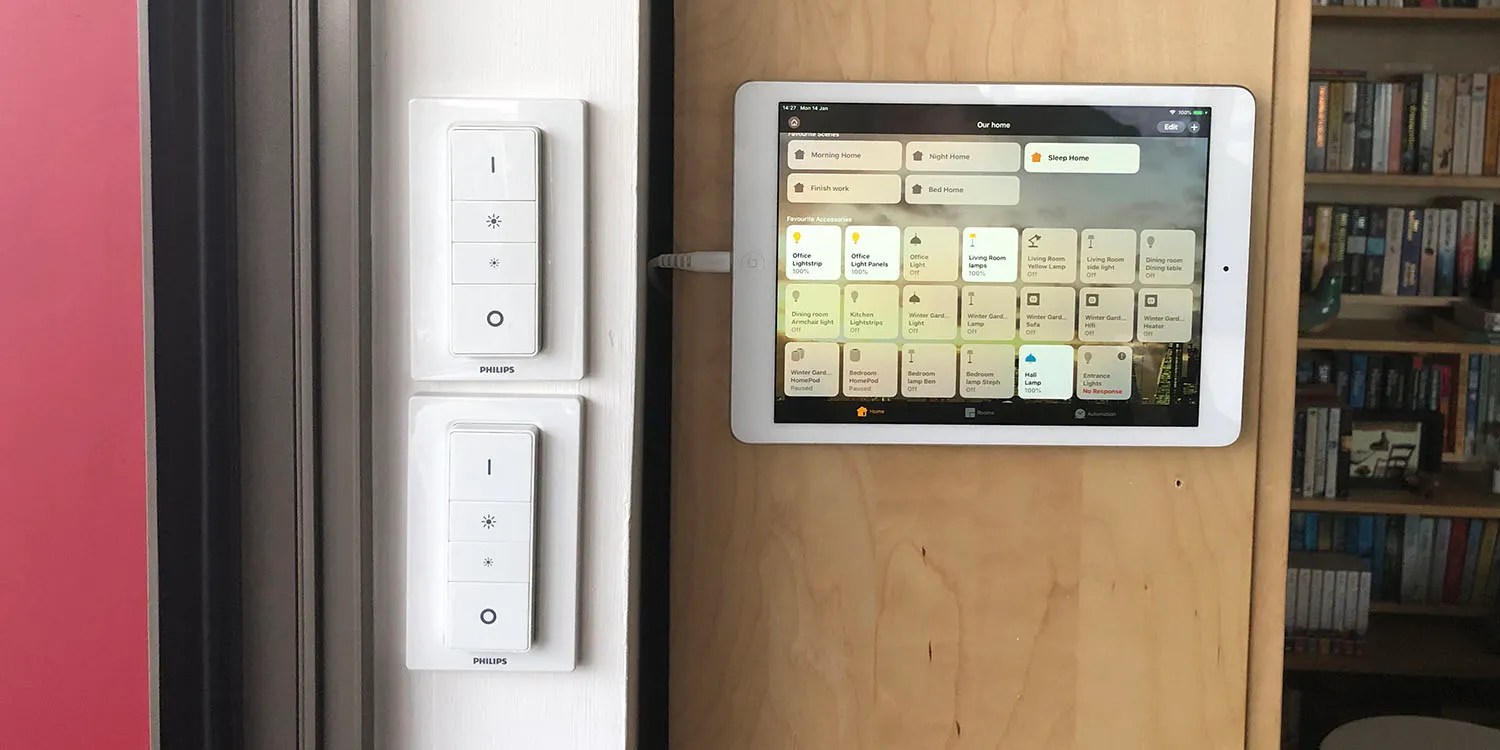
A Bloomberg report yesterday suggested that Apple is working on a wall-mounted smart display panel to act as “a command center for the home” – and that it could launch as early as March of next year.
I effectively trialled this concept back in 2019, wall-mounting an old iPad Air to serve as a dedicated smart home control panel, and reactions to that were enough to convince me that the upcoming new product is likely to be a winner …
Apple’s wall-mounted smart display panel
We first spotted code for the device back in September of last year, though it wasn’t clear then exactly what form-factor it might take. Bloomberg gave us an idea what to expect.
It will feature a square display that Bloomberg says is roughly 6 inches and “about the size of two iPhones side by side, with a thick edge around the display.”
It will also reportedly feature a camera at the top center along with a rechargeable built-in battery and speakers. The design is centered around being attached to a wall like a “classic home-security panel” and will be available silver and black color options.
My iPad-based smart home control panel
What I did was to repurpose an old iPad Air, using a magnetic mounting system to attach the device to the end of a bookshelf that was in a pretty central position in the home. I ran a Lighting cable from the iPad behind the bookshelf, eliminating the way for any cable ducting.
I set the iPad to never power down: Settings > Display & Brightness > Auto-Lock > Never, and made sure the Favorites in the Home app had all Scenes and key devices visible on a single screen.
I then used Guided Access to lock the iPad to the Home app. Settings > General > Scroll down to Learning > Guided Access > On. This lets you set a passcode (which I kept the same as the iPad one). You then just open the Home app and triple-click the Home button to lock it into the app. The only way out is to triple-click it again and enter the passcode.
Given that the iPad Air was only worth around $150 by then, the total cost of the setup was about $180.
Visitor reactions were universally positive
Personally, I almost exclusively use a combination of automations and Siri to control my smart home. Anything that can be automated is, using a combination of timers, events (like sunset, or the last person leaving the home), and motion sensors. If I need to activate a device or (more usually) scene, then I give a Siri command and the nearest HomePod will respond.
When it comes to non-techie friends, they like the automations (like kitchen lights coming on when you enter, and switching off after motion ceases), but reactions to Siri commands have generally been along the lines of it seeming complicated, or hard to remember the commands.
However, almost everyone who has seen the iPad control panel has loved it. It’s very easy to understand what the individual buttons do, and it takes 30 seconds to explain and demo a scene, with friends quickly sold on that too.
Even though it means walking up to the panel to control things (though it is also easily detachable), non-techy friends still find it makes sense.
For many, that control panel has turned smart home tech from something complex-sounding and not for normals into something accessible and appealing. I’m confident Apple’s device will do the same.
Photo: 9to5Mac
FTC: We use income earning auto affiliate links. More.
 1 week ago
3
1 week ago
3
















 English (US) ·
English (US) ·